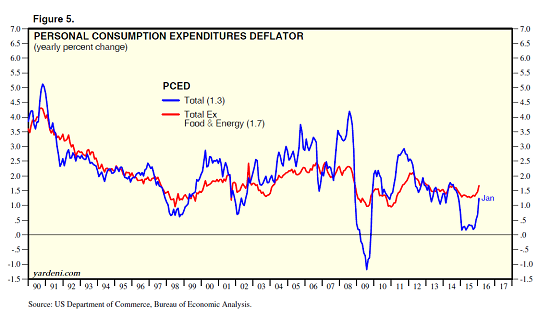U.S. economy has some spring in its step
Despite what you've been hearing, the U.S. economy actually looks pretty healthy. The spate of new data suggests the slump we've seen since last fall -- coinciding with severe volatility in the financial markets -- is fading.
Like so much in life, though, this is both good news and bad news.
Consider that U.S. durable goods orders increased 4.9 percent in January for the strongest result since March of last year. Both real personal income and real consumption just rose to fresh record highs. And the Atlanta Fed's GDPNow real-time tracking estimate for economic growth shows a gain of 2.1 percent for the current quarter, up from the previous quarter's upwardly revised increase of 1 percent.
Even the Citigroup Economic Surprise Index, one of my favorite indicators, is in the midst of a nice recovery, rising from a low of minus 55.7 in early February to minus 21.4 on Feb. 26.
Clearly, a bounce-back in economic growth is great for American workers because it will likely fuel a continuation of recent momentum in the labor market with both joblessness and wages moving in the right direction.
But it will likely complicate the Federal Reserve's policymaking concerning additional interest rate hikes this year. Currently, the central bank's official forecast is for another four quarter-point hikes this year, versus futures market expectations for no action until 2017 at the earliest.
Much depends on the path of inflation. The Fed's preferred measure of inflation -- based on core personal consumption expenditures -- rose at a 1.7 percent annualized rate in January, the hottest pace since July 2014 (chart above). The turnaround has been dramatic, thanks largely to stabilizing crude oil prices over the past few weeks as well as tailwinds from rent hikes and other inflation components.
With so-called core inflation (minus food and fuel) rapidly moving back toward the Fed's 2 percent target, it'll be hard to justify the market's demand for no rate hikes through the remainder of the year.
Traders, it seems, are basing their dour outlook on specific, still-weak data points such as the ISM manufacturing activity report, which Deutsche Bank economist Joseph LaVorgna noted has maintained a tight connection to overall GDP growth. When factories are slowing like they are now, it's a strong indication overall growth will be tepid. The bulk of the weakness is tied to a looming inventory drawdown.
That means Friday's nonfarm payroll report should provide additional clues as to whether the U.S. economy is truly perking up again -- and what the Fed's next moves might be.

